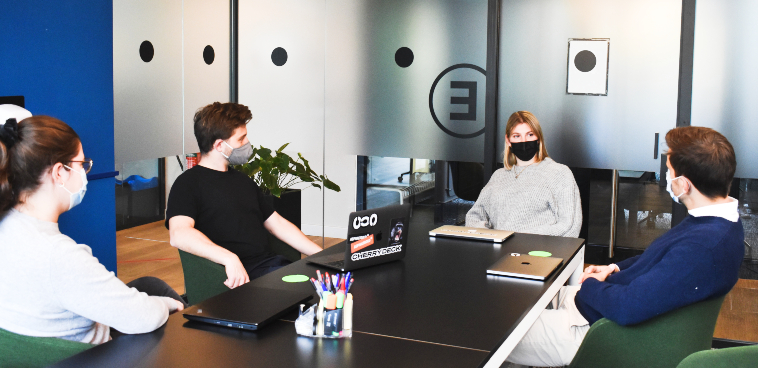Many of you are entering a new era of leadership. You need a new leadership approach and new skills to lead in a hybrid work set-up.
In a physical office, you need to lead the social and cultural dimensions of work. Remotely, your priorities should be operations and process. And you must be able to flex between the two contexts.
Learn how to do so in this new video.
To learn more from Denise Lee Yohn or to book her to speak to your organization, see her website and YouTube channel.
If you enjoy this article, sign up for SmartBrief on Leadership and SmartBrief on Workforce, among SmartBrief’s more than 200 industry-focused newsletters.
Transcript
Now that many companies are re-opening offices, you might be thinking about a hybrid approach to work in which employees work remotely and in the office. There’s a lot to figure out in terms of assets, logistics, policies — and your leadership. A hybrid work setup requires a different leadership approach and new skills.
You and your fellow leaders need to flex your leadership to the context.
Here’s what I mean: With hybrid work, the social functions of a physical office become more important, while operations and process are the priorities when employees are remote. As a leader, you must flex between the two contexts and facilitate both kinds of work.
To lead the culture-building and connection functions of the office, plan, promote and give permission.
- First, plan the time in-office for teams to do collaborative work that is better done in person, such as brainstorming or building and testing prototypes. And plan activities and events that bring people together informally and socially, whether that’s initiating happy hours or offering yoga classes.
- Second, promote relationship-building by ensuring that people get to meet with others they normally wouldn’t encounter and that new people have opportunities to hang out with and get to know others.
- And finally, give permission for people to be social. Don’t schedule back-to-back meetings when people are in the office. If necessary, consider blocking off no-meeting time on everyone’s calendars. Encourage people to get away from their workstations and to mingle. Perhaps the best way you express permission for others to be social is to be social yourself. Don’t hole yourself up in a closed office – make yourself available for people to approach you informally. Participate in the social events and activities and strike up spontaneous non-work conversations.
When it comes to remote work, flex to a different leadership style. Your priority should be enabling people to get things done and be successful. Do this through access, standards and engagement.
- Ensure everyone has access to the tools and resources they need to be productive when working remotely. For example, consider one of the many new communication and collaboration platforms that facilitate asynchronous work among people in different time zones or on different work schedules.
- Also, establish standards for live interactions such as meetings and one-on-ones so they are relevant, action-oriented, and efficient.
- And, ensure everyone is engaged. People are less likely to speak up and a lot of nuance can be lost in a remote situation, so use active listening and proactively solicit input, questions, and feedback. Also engage people by managing visibility. I mean, manage other people’s visibility by ensuring that everyone, not only people who are in the office more, is called on, brought into opportunities and know what’s going on. And manage your own visibility by being available when and how people need help, supporting people individually depending on their needs, and knowing how everyone is doing and the results they’re producing.
Hybrid work comes with challenges and opportunities. Take advantage of what working in the office and working remote uniquely enables you to do — and flex your leadership to the context.
